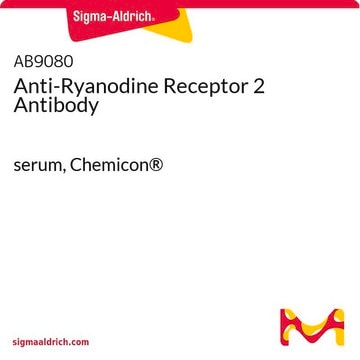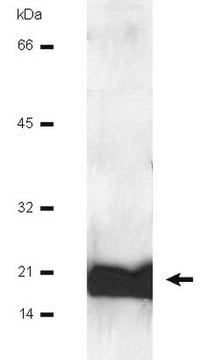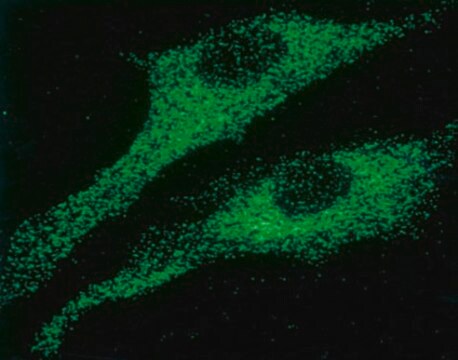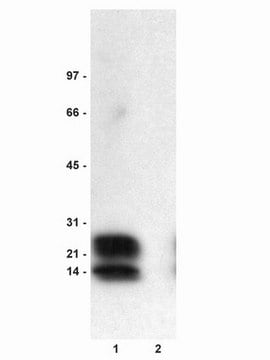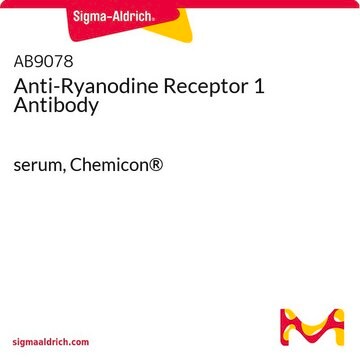ABS2231
Anti-phospho RyR2 (Ser2808)
Synonyme(s) :
RYR-2, RyR2, hRYR-2, Cardiac muscle ryanodine receptor, Cardiac muscle ryanodine receptor-calcium release channel, Type 2 ryanodine receptor
About This Item
Produits recommandés
Source biologique
rabbit
Niveau de qualité
Forme d'anticorps
purified antibody
Type de produit anticorps
primary antibodies
Poids mol.
calculated mol wt 564.57 kDa
observed mol wt ~565 kDa
Produit purifié par
affinity chromatography
Espèces réactives
rabbit
Réactivité de l'espèce (prédite par homologie)
mouse, human
Conditionnement
antibody small pack of 100 μg
Technique(s)
western blot: suitable
Isotype
IgG
Séquence de l'épitope
C-terminal cytoplasmic domain
Numéro d'accès Protein ID
Numéro d'accès UniProt
Température de stockage
-10 to -25°C
Modification post-traductionnelle de la cible
phosphorylation (pSer2808)
Informations sur le gène
human ... RYR2(55193)
Description générale
Spécificité
Immunogène
Application
Evaluated by Western Blotting in rabbit skeleton muscle microsomal preparation.
Western Blotting Analysis (WB): A 1:300 dilution of this antibody detected RyR2 phosphorylated on serine 2808 in rabbit skeleton muscle microsomal preparations, but not in microsomes treated with protein phosphatase.
Note: Actual optimal working dilutions must be determined by end user as specimens, and experimental conditions may vary with the end user
Forme physique
Reconstitution
Stockage et stabilité
Autres remarques
Clause de non-responsabilité
Not finding the right product?
Try our Outil de sélection de produits.
Code de la classe de stockage
12 - Non Combustible Liquids
Classe de danger pour l'eau (WGK)
WGK 1
Point d'éclair (°F)
Not applicable
Point d'éclair (°C)
Not applicable
Certificats d'analyse (COA)
Recherchez un Certificats d'analyse (COA) en saisissant le numéro de lot du produit. Les numéros de lot figurent sur l'étiquette du produit après les mots "Lot" ou "Batch".
Déjà en possession de ce produit ?
Retrouvez la documentation relative aux produits que vous avez récemment achetés dans la Bibliothèque de documents.
Notre équipe de scientifiques dispose d'une expérience dans tous les secteurs de la recherche, notamment en sciences de la vie, science des matériaux, synthèse chimique, chromatographie, analyse et dans de nombreux autres domaines..
Contacter notre Service technique

